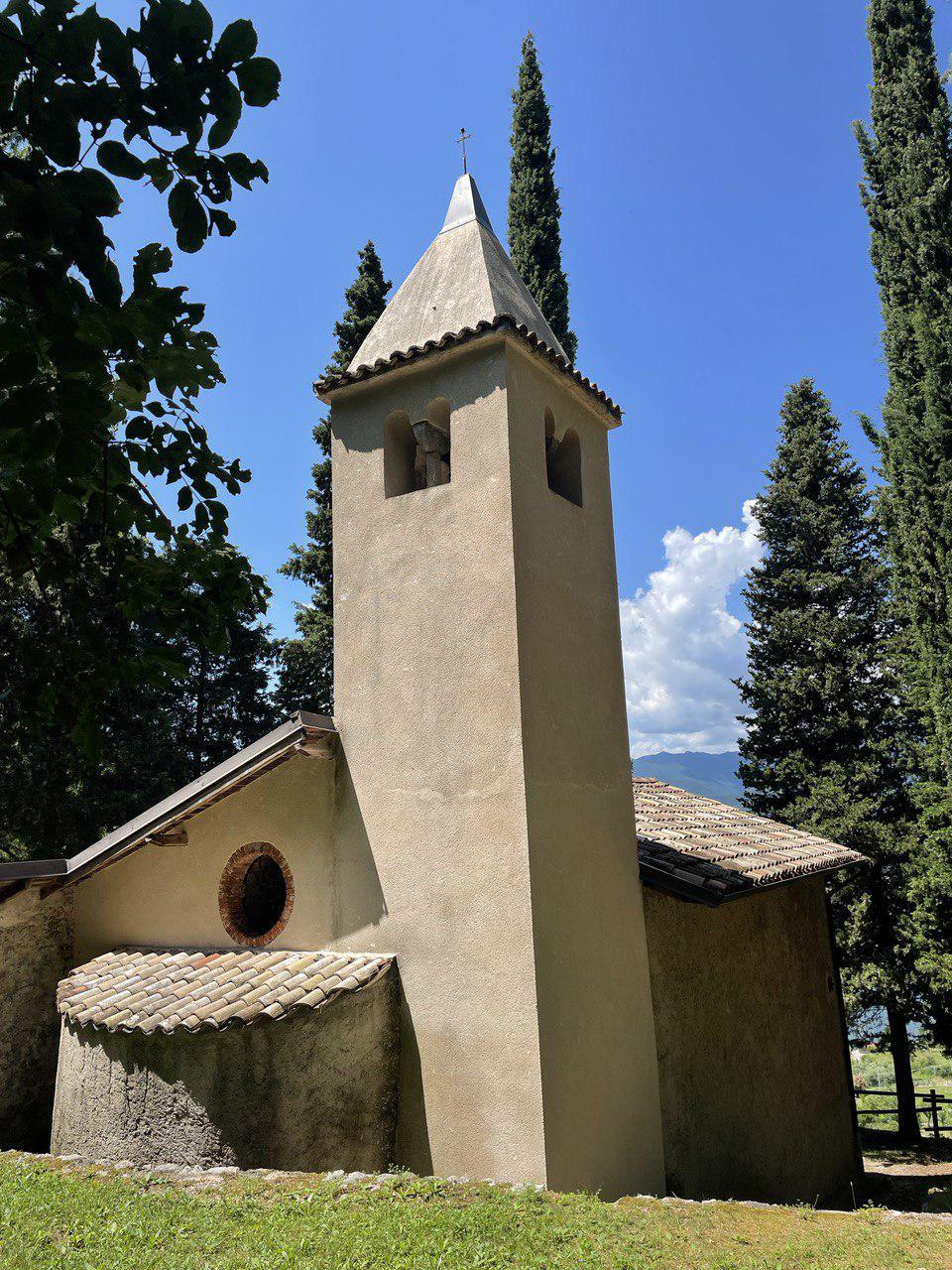
Chiesa di San Michele
Malcesine VR Veneto
IT EN DE
La chiesetta si trova nella parte più alta delle Vigne, vicino alla Val Ciasera, raggiungibile dopo un'ora di salita dal capoluogo. Esternamente rustica, è stata rinnovata nel 1908. Originariamente era una cappellina rudimentale con abside, campanile quadrato e bifore nella cella campanaria. Nel 1159, papa Adriano IV riconobbe la chiesa di S. Angelo come proprietà della Pieve di S. Stefano di Malcesine. Nei secoli successivi, fu trasformata e adornata con un secondo altare dedicato a Maria SS. Nel 1908, fu restaurata e allungata, aggiungendo un piccolo coro e allungando l'aula. Ora viene utilizzata per cerimonie religiose specifiche, come il terzo giorno delle Rogazioni e il 29 settembre, oltre alle richieste dei devoti.
IT EN DE
The little church is located at the highest part of the Vigne, near the Val Ciasera, and can be reached after an hour's ascent from the main town. Externally rustic, it was renovated in 1908. It was originally a rudimentary chapel with an apse, a square bell tower and mullioned windows in the belfry. In 1159, Pope Adrian IV recognised the church of S. Angelo as the property of the Pieve di S. Stefano di Malcesine. In the following centuries, it was transformed and adorned with a second altar dedicated to the Blessed Virgin Mary. In 1908, it was restored and lengthened, adding a small choir and extending the hall. It is now used for specific religious ceremonies, such as the third day of the Rogations and 29 September, as well as for devotees' requests.
IT EN DE
Die kleine Kirche befindet sich auf dem höchsten Punkt der Vigne, in der Nähe des Ciasera-Tals, und ist nach einem einstündigen Aufstieg vom Hauptort aus zu erreichen. Von außen rustikal, wurde sie 1908 renoviert. Ursprünglich handelte es sich um eine einfache Kapelle mit einer Apsis, einem quadratischen Glockenturm und Rundbogenfenstern im Glockenturm. Im Jahr 1159 erkannte Papst Adrian IV. die Kirche S. Angelo als Eigentum der Pieve di S. Stefano di Malcesine an. In den folgenden Jahrhunderten wurde sie umgebaut und mit einem zweiten Altar ausgestattet, der der Heiligen Jungfrau Maria geweiht ist. 1908 wurde sie restauriert und verlängert, indem ein kleiner Chor hinzugefügt und der Saal erweitert wurde. Heute wird sie für besondere religiöse Zeremonien, wie den dritten Tag der Rogationen und den 29. September, sowie für Bitten der Gläubigen genutzt.

